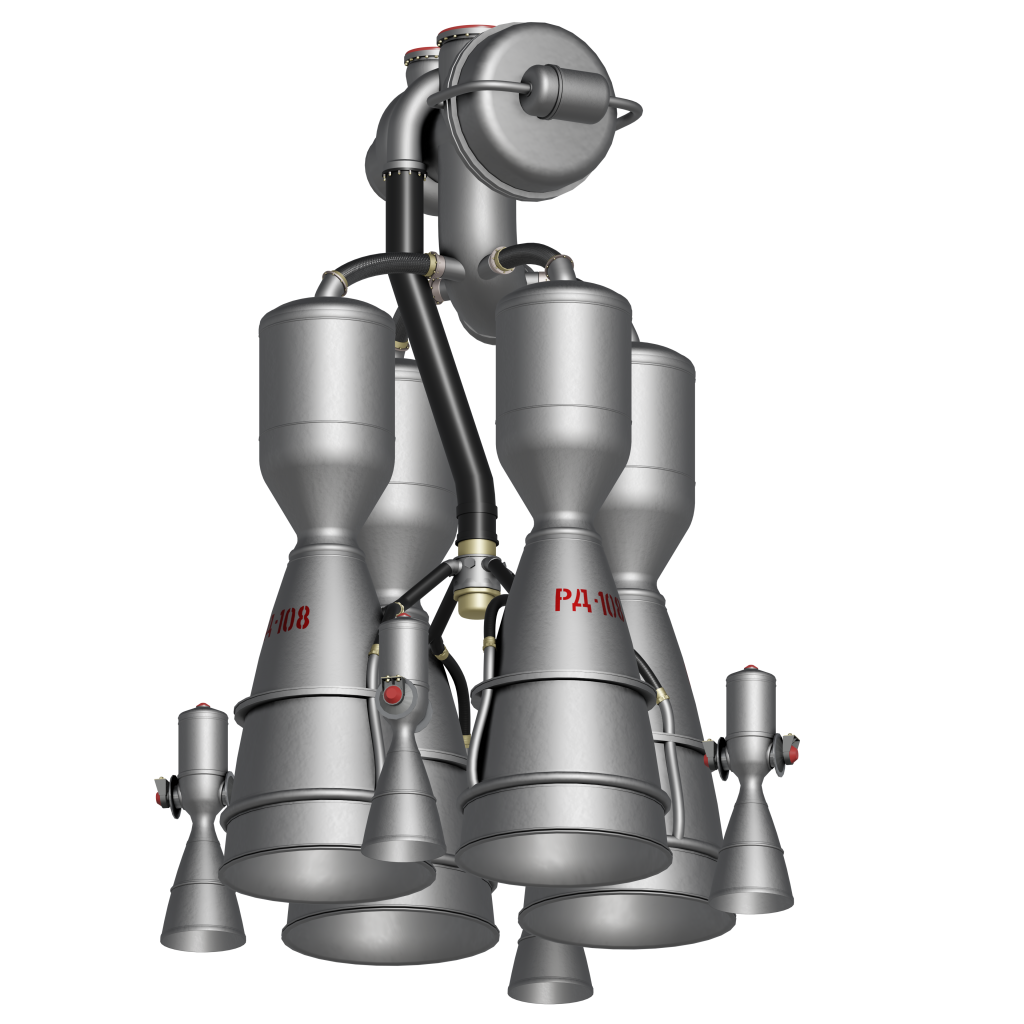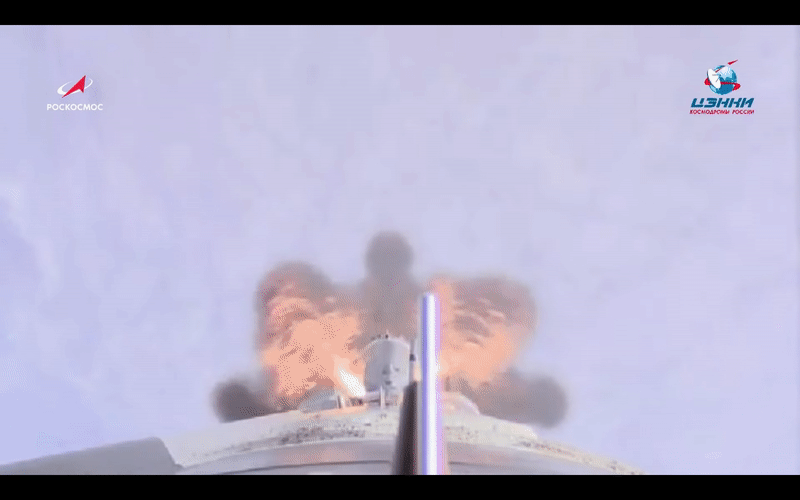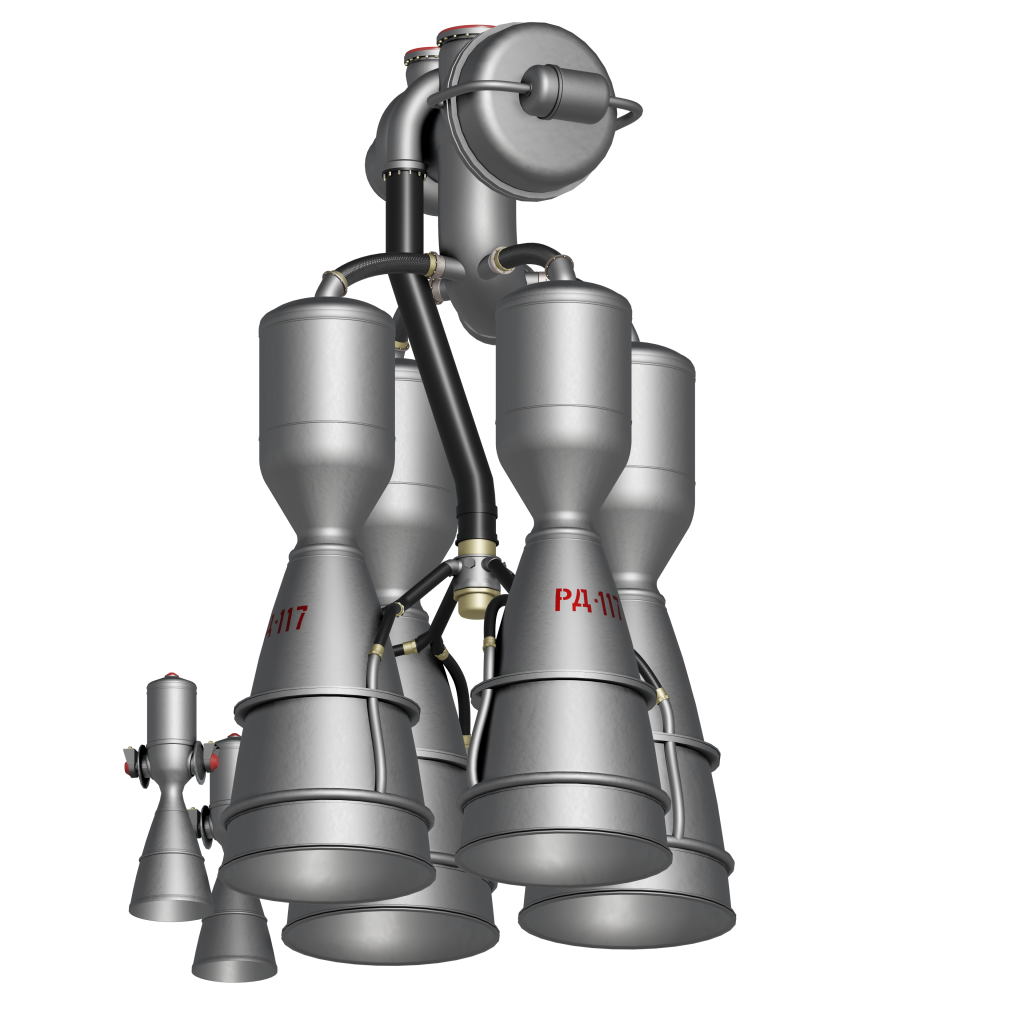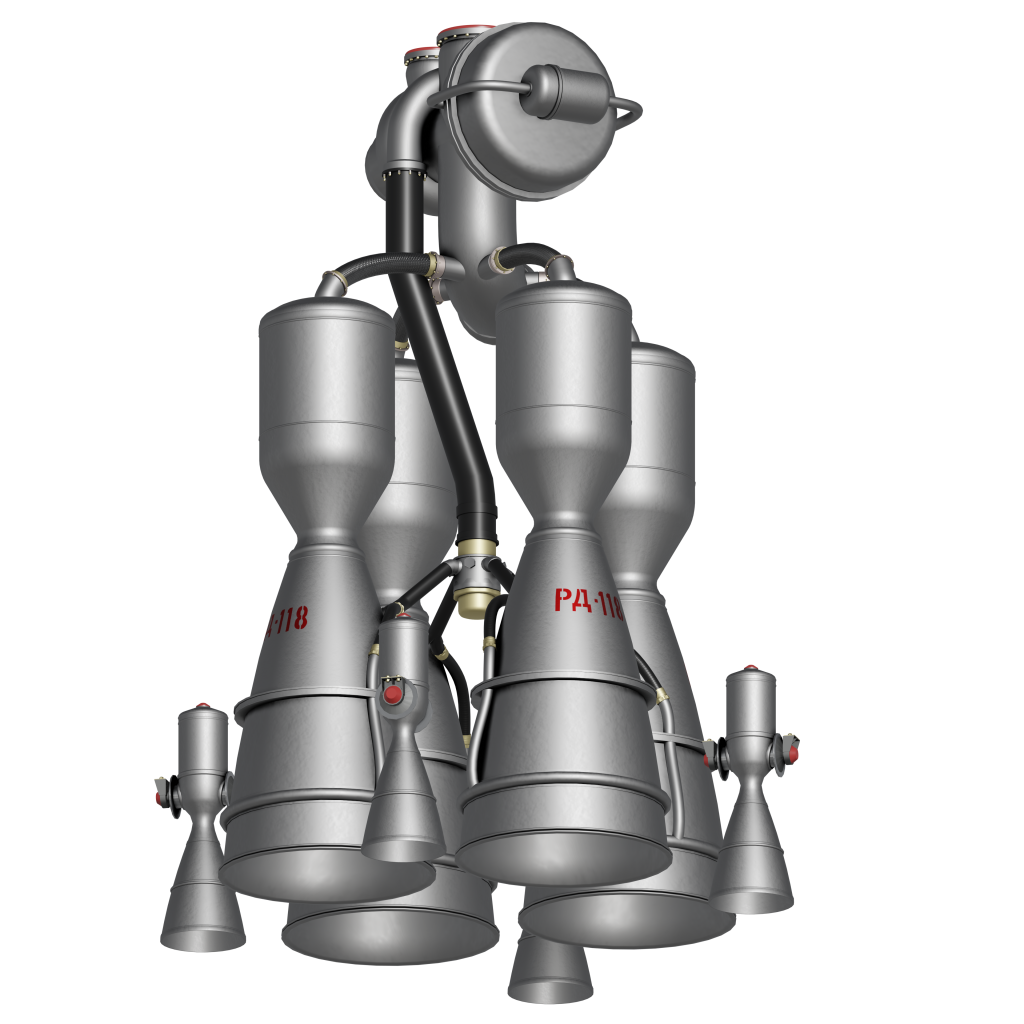RD-107 and RD-108
Development
The R-7 was the first rocket to reach orbit. Originally, it had a very simple goal – to be able to carry a 3-tonne warhead over a distance of 8,000 km, which would make it possible to hit the USA from the Soviet Union. Glushko tried to scale up the ED-140 in a new design called the RD-105. However, he faced the problem of combustion instability. After that, he decided to split the combustion chamber into four smaller ones fed by a common turbopump, which solved the problem. In fact, this concept of multiple combustion chambers is a staple of many Soviet-era designs.
-

A render of the Soviet ED-140 engine. (Credit: Caspar Stanley) -

A render of the Soviet RD-105 engine. (Credit: Caspar Stanley)
The developed RD-107 engine (for Stage 1) and its twin sibling the RD-108 (for Stage 2) are still in use today! These engines first flew on May 15, 1957, on the first R-7 rocket, which featured four strap-on boosters (Stage 1) that surrounded a single core (Stage 2). The RD-107 and RD-108 are almost identical. In fact, the only difference is the number of vernier engines, the outer boosters with the RD-107 have a pair of them, while the center core with the RD-108 has four. In addition, these engines were a much more elegant solution compared to the heavy control vanes made of graphite that would steer the V-2.
-

A render of the Soviet RD-107 engine. (Credit: Caspar Stanley) -

A render of the Soviet RD-108 engine. (Credit: Caspar Stanley)
Characteristics
Ignition
Both the RD-107 and RD-108 engines run on keralox. This allowed a simple ignition process where all cores of the rocket would be lit on the ground simultaneously and did not require starting an engine mid-flight. One of the interesting things about their ignition process is that the solution to light the engines is basically giant wooden matches. Those matches look like T-shaped structures which engineers would stick up the nozzle into the main combustion chamber. All 32 chambers (20 main ones and 12 steering nozzles known as vernier engines) get their own igniter. On the tip of these structures is a pair of pyrotechnics that only need one to light successfully for ignition. This concept is still in use today!
Staging
The staging is relatively simple as all four boosters fall away at the same time. Meanwhile, a valve pops open in the LOx tank, which helps to propel the tanks away from the core stage in a pattern, known as the “Korolev cross”.

Specifications
The RD-107 could hit 810 kN of thrust at sea level and 1,000 kN in a vacuum, with an ISP of 256 s at sea level, and 313 s in a vacuum. Meanwhile, the RD-108 could reach 745 kN of thrust at sea level and 941 kN in a vacuum, with an ISP of 248 s at sea level, and 315 s in a vacuum. Thus, they achieved huge improvements over the early RD-100 engines. Furthermore, the turbopump of the RD-107/108 was powered by steam just like the A4. They ran H2O2 over a catalyst to create high-pressure hot gases that spun the turbine and powered the LOx and kerosene pumps. For this reason, there was also a fully separate tank to store H2O2. This is a very simple solution which is still in use today.
Overall, the main innovations of these engines included multiple combustion chambers, regenerative cooling, the aforementioned vernier engines, and variable mixture ratio, which helped each core to drain its propellant equally. Since the RD-107/108 first flew in 1957, these engines have gone through only minor changes. As the old adage goes: “If it isn’t broken, why fix it?”

RD-117 and RD-118
There were the RD-117/118 upgrades which flew 786 times from 1973 to 2017 on the Soyuz U and U2. They were very similar to the original RD-107/108 and had only minor structural changes. For example, they had different injectors, which increased their performance a little. Moreover, the RD-117/118 sometimes ran on a fuel called Syntin, a hydrocarbon-based fuel. This fuel also offered increased performance, however, it was much more expensive.
-

A render of the Soviet RD-117 engine. (Credit: Caspar Stanley) -

A render of the Soviet RD-118 engine. (Credit: Caspar Stanley)
RD-107A and RD-108A
Finally, there was the RD-107A/108A that flew 70 times from 2001 through 2019 on the Soyuz FG. In addition, these engines support the new Soyuz-2, which started flying in 2004 and is still in use today. Meanwhile, the center core of the Soyuz-2.1v rocket, which started flying in 2013, does not run on the RD-108A, but on the closed cycle NK-33 engine. This engine was developed for the Soviet Union’s massive N1F moon rocket.
The RD-107A produced 839 kN of thrust at sea level and 1,020 kN in a vacuum, with an ISP of 263 s at sea level and 320 s in a vacuum. Otherwise, they have very few changes compared to the original.
-

A render of the Soviet RD-107A engine. (Credit: Caspar Stanley) -

A render of the Soviet RD-108A engine. (Credit: Caspar Stanley)
from Hacker News https://ift.tt/3nNagOc
No comments:
Post a Comment
Note: Only a member of this blog may post a comment.